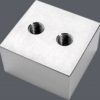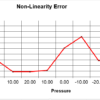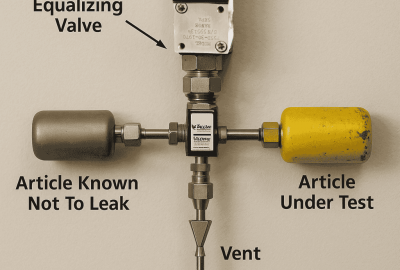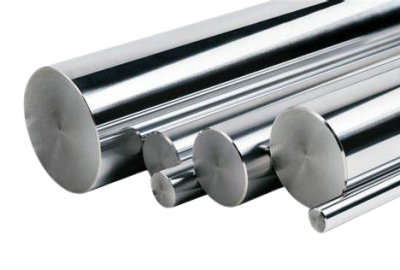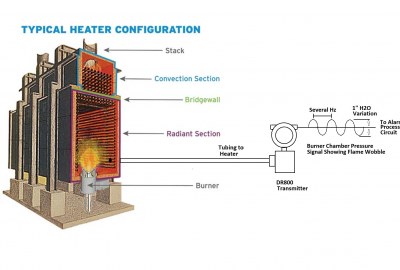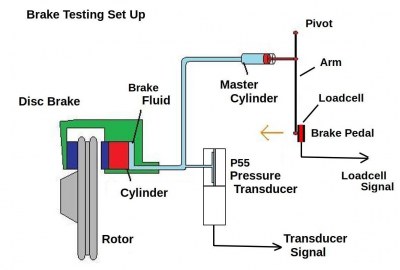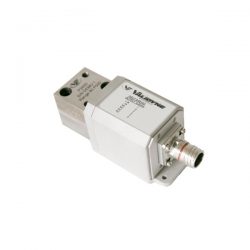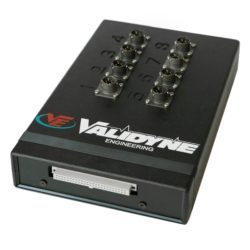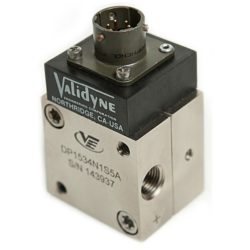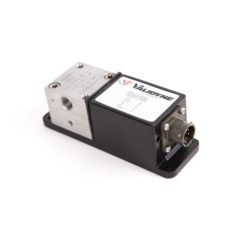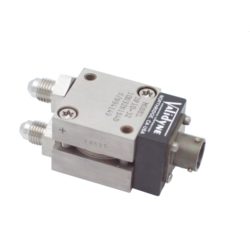Pressure Measurement
Resolution and Frequency Response in Pressure Transducers
Resolution and frequency response in pressure sensors and pressure transducers are two performance parameters that are important, but often misunderstood. This article will describe how each of these parameters relates to Validyne pressure transducers and pressure sensors.
Resolution
Resolution of a pressure transducer is defined as the smallest change in pressure that can be detected by the transducer. Validyne pressure transducer are analog devices and the resolution, in theory, is infinite. As a practical matter, however, the resolution of the analog signal from the pressure transducer electronics is a function of the signal to noise ratio. All analog signals contain noise and the various carrier demodulator circuits used with Validyne variable reluctance sensors have somewhat different specifications for the noise level, depending on the demodulation scheme employed and the output filtering used. In general, the noise level of the carrier demodulator signal will be 0.05% or less of the pressure transducer full scale. So the smallest pressure change that can be detected from the Validyne pressure transducer signal will be less than 0.05% of the maximum pressure range of the pressure transducer.
Frequency Response
The frequency response of a pressure transducer is a measure of how quickly the pressure transducer can respond to changes in pressure. There are two ways to define this: response time and flat frequency response. Response time – sometimes called the sensor time constant – is the time, in seconds, required for a sensor signal to change from 0 to 63.2% of the full scale when the pressure sensor is exposed to an instantaneous full scale pressure change. Response time is often used for slower pressure transducers that respond to pressure changes as a first-order system. Knowing the time constant of the pressure transducer allows the user to calculate how the sensor signal will change in response to different applied pressure signatures during operation.
For faster pressure transducers – such as Validyne pressure transducers – the flat frequency parameter is a more accurate way to describe the pressure transducer frequency response. Flat frequency is the maximum frequency, in Hz, that the pressure sensor can pass into its signal without distortion. This depends on the geometry and construction of the pressure sensor, the plumbing leading up to the pressure sensor, the fluid media and the output filtering of the carrier demodulator.
Validyne has tested the standard DP15 family of pressure sensors or the P55 family of pressure transducers types for flat response and this has been found to be 80 Hz in air when the varying pressure source is close-coupled to the sensor port. That means that the pressure sensor is capable of allowing pressure changes of up to 80 times per second to pass, without distortion when the pressure transducer is close-coupled.
Many times, however, the pressure transducer is connected by a length of tubing to the source of the pressure variations, and this degrades the flat frequency response, as shown in the table below:
| Tubing Length, FT | Flat Reponse, Hz |
|---|---|
| 0 | 80 |
| 0.5 | 50 |
| 1.0 | 36 |
| 2.0 | 25 |
| 3.0 | 20 |
| 4.0 | 12 |
| 5.0 | 8 |
The output filtering of the carrier demodulator will also affect the system response, but in general most will pass the 80 Hz sensor response frequency. Those carrier demodulators models that feature selectable low-pass filtering, however, may provide for lower settings that will filter out these frequencies, even when the pressure sensor is capable of passing them into the signal.
The flat frequency response of the pressure transducer/plumbing system will change by ratio of the speed of sound in air to the speed of sound in a liquid. For water this ratio is about 4X, so the maximum frequency response of the pressure transducer in liquids will be greater than 300 Hz. For a CD15 demodulator and DP15 pressure sensor, the output filtering will allow frequencies of up to 1 KHz to pass, and this is the fastest system we offer. The P55 electronics in the P55 pressure transducer, however, has a low-pass cut-off frequency of 250 Hz and so may attenuate very fast pressure changes in liquids.
The response time can be roughly related to the flat frequency response for the purposes of comparing the performance of various sensor types. Since response time is a measure of how long it takes for the pressure transducer signal to rise from 0 to 62.2% of full scale, the rise time can be assumed to be not more than one quarter of one complete cycle of the pressure sensor maximum flat frequency. This is simply the reciprocal of 4 times the maximum flat frequency. Thus the 80 Hz flat response would be 1/(4 * 80) or about 3.2 msec.
Comments are closed

